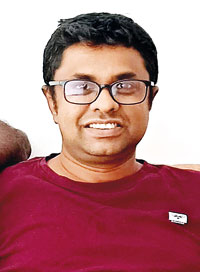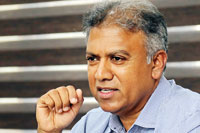News
Request for voluntary disconnection of solar power systems slammed by experts
View(s):By Dilushi Wijesinghe
Experts in the renewable energy sector have criticised the Ceylon Electricity Board (CEB) for requesting the voluntary disconnection of solar power systems, calling it a major setback for their industry and blaming the utility for systemic failures.
Between April 10 and 21 this year, the CEB requested the disconnection of net plus and net plus plus systems.
Under the current structure, net plus and net plus plus contributors receive direct payment for electricity supplied by their solar systems to the national grid. Under net accounting, meanwhile, payments are made for any excess energy produced (and not consumed by the generating party). Net metering contributors, on the other hand, are credited for their surplus energy, with the amount deducted from their electricity bill the following month.

Deputy President of the National Chamber of Commerce (NCC) Dr. Lakmal Fernando told the Sunday Times that net metering and net accounting systems were also disconnected, with the CEB allegedly making people fear the consequences of failing to switch it off.
The disconnections were called for without offering financial compensation for generation loss or adequate technical explanation, Dr. Fernando said. “Temporary disconnections in global power purchase agreements (PPAs) are guided by clear rules and compensation clauses, but ours lack these,” he explained, adding that this makes the contracts “nearly unbankable.” Around 615 megawatts of solar power were added to the grid through renewable energy over the past year alone (January 2024 – December 2024), he said.
Sri Lanka is targeting 70% renewable energy by 2030, but the sector cannot thrive without stronger government support, Dr. Fernando said. “If the government doesn’t act, the sector may collapse.”
Many of these decentralised solar systems do not burden the national grid, Dr. Fernando insisted: “They generate energy consumed locally and never enter the transmission network.” There is no public data to support the CEB’s claims of excess generation amidst reduced demand. Some developers are now considering legal action.

Roshan Liyanage
There has been a serious negative impact on small and medium enterprises, Dr. Fernando said, with 60% of solar developers in the Western Province alone facing bankruptcy due to loan defaults tied to their solar investments.
How can the CEB claim ignorance of solar generation points across the country, he asked. “Every solar project, whether it is 1 kilowatt or 5 megawatts, requires grid connection approval from the CEB or LECO,” he pointed out, calling the CEB’s claim that they don’t know where solar is being generated a “lame excuse.”
Investors were now pulling back due to unreliable policies and the CEB’s failure to implement its own long-term generation plan, which envisages the introduction of much-needed grid-level battery storage. Continued blackouts, such as the recent nationwide power outage, have major economic costs, Dr. Fernando warned, pointing again to the CEB’s failure to use available data and simulation tools to forecast solar generation more effectively.
The utility must take responsibility for its shortcomings, he said, stressing that the long-term generation plan was developed by the CEB and approved by the Public Utilities Commission of Sri Lanka. “If they lack expertise, they should ask for help, but they can’t claim to be capable and still not deliver,” he maintained.
There is a lack of progress on battery storage infrastructure despite years of warnings and even funding from the Asian Development Bank (ADB). “We need these systems to integrate renewable energy effectively,” Dr. Lakmal explained. But the tender process for battery systems hasn’t begun. He expressed frustration at the government’s lack of response—he has been waiting a month for a meeting with the President.

Lakmal Fernando
Users like Ravi (name changed), who owns three solar panels that supply an average of 70 kilowatt-hours of electricity each day to the national grid, are in difficulty. He took a bank loan to install the panels and is required to pay around Rs. 120,000 monthly for all the panels.
Ravi did not disconnect his rooftop solar over fears that he wouldn’t be able to repay the loan.
Roshan Liyanage, another solar user who owns a printing press, said, “We cannot manage a printing press if we disconnect the system.” He noted that 85 kilowatt-hours are produced on a rainy day, while up to 1,200 kilowatt-hours are produced on a clear day.
But one renewable energy service provider under the net metering system, who also wished to remain anonymous, spoke positively about the CEB’s directive, saying, “Requesting providers to switch their panels off during the day makes sense because of the technical issue of the energy supply being higher than the demand. We should think about the country and not be selfish.”
The best way to say that you found the home of your dreams is by finding it on Hitad.lk. We have listings for apartments for sale or rent in Sri Lanka, no matter what locale you're looking for! Whether you live in Colombo, Galle, Kandy, Matara, Jaffna and more - we've got them all!

